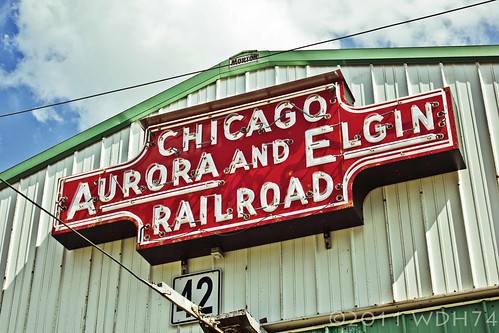The Chicago, Aurora, and Elgin was an interurban railroad that ran from Chicago out to what is now the far western suburbs but was then two medium sized cities and a bunch of small towns. When the lines opened in 1902 as the Aurora, Elgin and Chicago, the trip from Elgin to the city was just over an hour-about what it takes on Metra today.
However, the CA&E had some added benefits over the mainline railroads, such as the Chicago and North Western or the Burlington Route. It served some smaller towns, particularly at the outer reaches, that the big roads didn't. The AE&C also ran into the Loop, using the elevated tracks, terminating at Wells Street Terminal. And, the AE&C was able to send trains out every fifteen minutes, alternating between Elgin and Aurora, far more frequently than other roads.
The AEC suffered during World War One, filing for bankruptcy in 1919 and emerging as the Chicago, Aurora, and Elgin. Coming under the control of utilities magnate Samuel Insull, improvements were made to facilities and track, but it didn't keep the CA&E from filing for bankruptcy again in the late thirties, a bankruptcy it wouldn't emerge from until after the Second World War.
The CA&E never really recovered. Despite improvements both the physical plant and the purchase of new rolling stock, ridership steadily declined as automobile ownership exploded in the postwar years. The final death blow came in the fifties when the CTA ended service on the Garfield Park elevated branch, tracks that were used by the CA&E to reach the Loop. Trains stopped in Forest Park, where riders had to then transfer to CTA trains to reach the Loop. The end came at noon on July 3, 1956, with very little warning-riders who had taken the Roarin' Elgin into the city that morning found that they were stranded when they returned for a ride home.
This is an original Chicago, Aurora, and Elgin station sign. It's been nicely restored, and hangs on one of the sheds at the Illinois Railway Museum. I don't know if it's hooked up to power or not, but I'd love to see it lit up again.

No comments:
Post a Comment